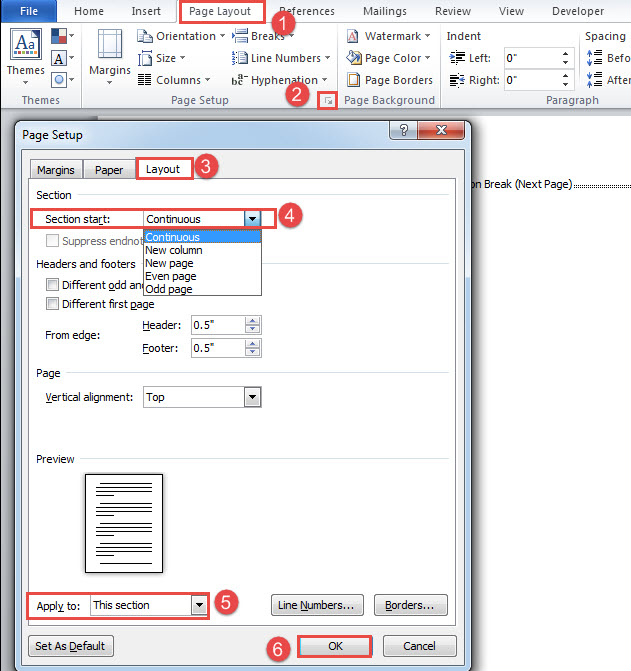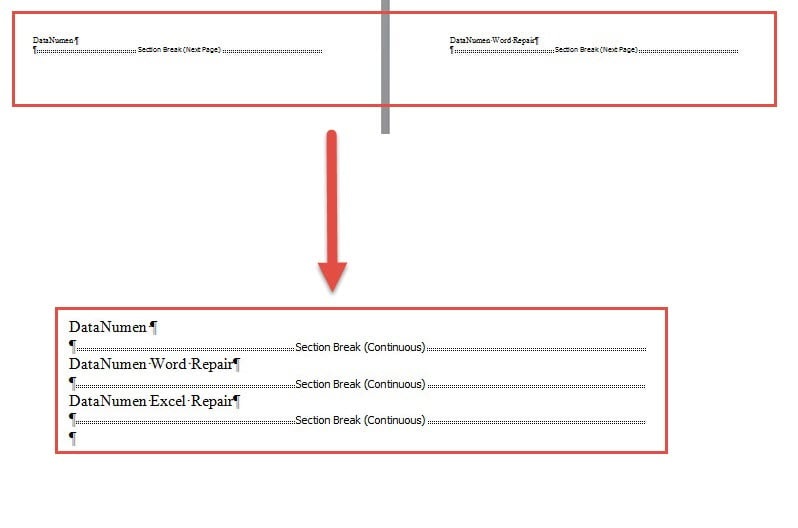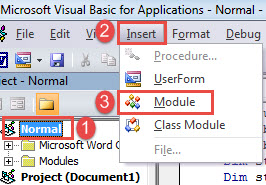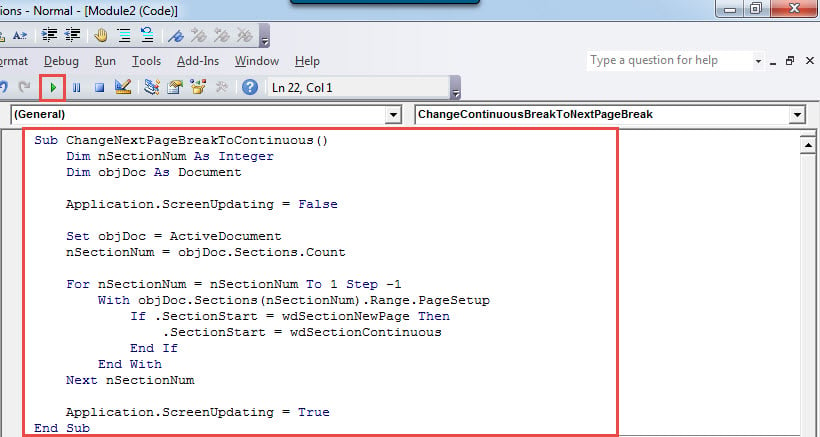In this article, there will be 2 quick ways for you to change the type of section breaks in your Word document.
The most used types of section break in Word are “Next Page” and “Continuous”. To insert the first one means to start a new page for the new section. This divides sections in a clear view. But when it comes to printing, extract papers will be needed. Certainly, it’s not an environment-friendly way. Then you can consider using the “Continuous” break, which can save you many papers but may not do well in meeting the separation demand.
Therefore, we want to introduce ways which you to pick according to specific requirement.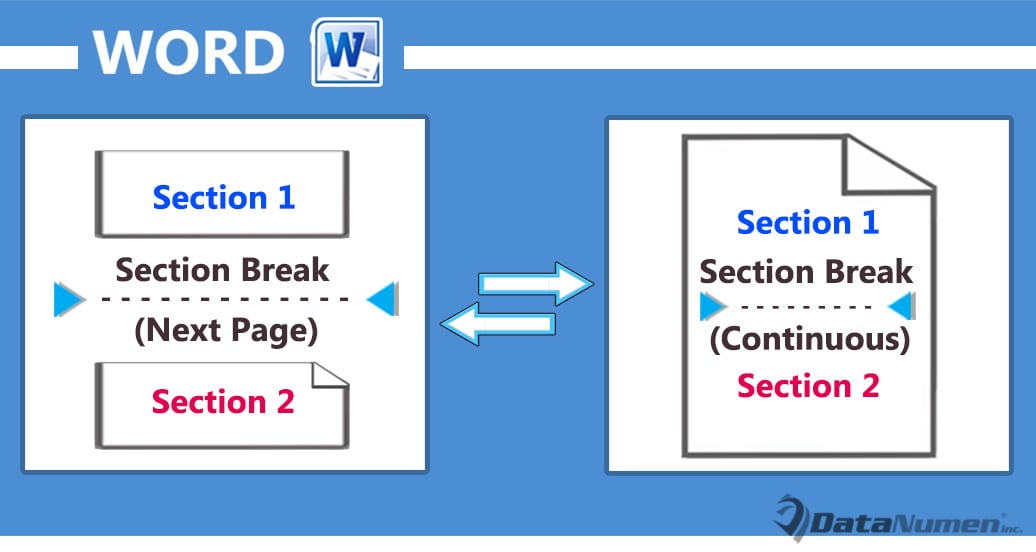
Method 1: Change the Page Setup
- First of all, put cursor inside a target section and click the “Page Layout” tab in the Ribbon.
- Next click the arrow button in “Page Setup” group to open the same name dialog box.
- Then click “Layout” tab in the box.
- And choose desired type of section break from the combo box of “Section start”.
- Next in “Apply to” combo box, select an applying range. You can choose to change the type of a single section break or multiple ones as well.
Here is the outcome:
Method 2: Run Word Macro to Change Type of All Section Breaks in a Document
- To start with, press “Alt+ F11” to trigger the VBA editor in Word.
- Next click “Normal” project and click “Insert” tab on the menu bar.
- Then choose “Module” on the drop-down menu.
- Next double click on the new module to open it.
- Now in the editing space, just paste these codes:
Sub ChangeNextPageBreakToContinuous()
Dim nSectionNum As Integer
Dim objDoc As Document
Application.ScreenUpdating = False
Set objDoc = ActiveDocument
nSectionNum = objDoc.Sections.Count
For nSectionNum = nSectionNum To 1 Step -1
With objDoc.Sections(nSectionNum).Range.PageSetup
If .SectionStart = wdSectionNewPage Then
.SectionStart = wdSectionContinuous
End If
End With
Next nSectionNum
Application.ScreenUpdating = True
End Sub
- Hit “F5” to run the macro.
This macro shall change all section breaks in “Next Page” type to “Continuous”. The result is the same as that in method 1.
Now if you need to change all continuous section breaks to the “Next Page” type, use the following macro:
Sub ChangeContinuousBreakToNextPageBreak()
Dim nSectionNum As Integer
Dim objDoc As Document
Application.ScreenUpdating = False
Set objDoc = ActiveDocument
nSectionNum = objDoc.Sections.Count
For nSectionNum = nSectionNum To 1 Step -1
With objDoc.Sections(nSectionNum).Range.PageSetup
If .SectionStart = wdSectionContinuous Then
.SectionStart = wdSectionNewPage
End If
End With
Next nSectionNum
Application.ScreenUpdating = True
End Sub
Tool to Repair Documents
It’s not unlikely to come across Word issues and end up with damaged docx. Thus, you must take actions immediately. And the quickest way to recover your data is to choose a qualified repairing tool.
Author Introduction:
Vera Chen is a data recovery expert in DataNumen, Inc., which is the world leader in data recovery technologies, including repair xls and pdf repair software products. For more information visit www.datanumen.com
